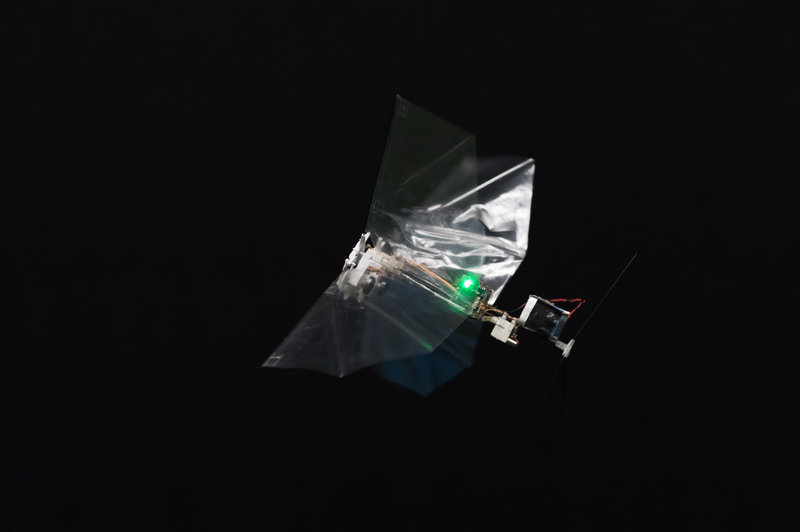
Can robots imitate the flight of birds?
24. Januar 2020Can robots imitate the flight of birds?
New York, 24.1.2020
For decades scientists have been trying to develop machines that imitate the flight of birds. A team at Stanford University in California has come a long way. They created the PigeonBot – a winged robot that, as they say, mimics the „graceful complexity of bird flight“ better than any other robot.
When a bird hovers through the air, it dramatically changes the shape of its wings by flying hairpin curves and moving up and down. Birds change the shape of their wings much more than airplanes. Scientists have long felt challenged by the complexity of bird flight. In the meantime, they have realised that the movements that birds‘ wings make are far more efficient than those of an aeroplane: „In fact, birds are able to fly further and longer and maneuver much better,“ says David Lentink, Professor of Mechanical Engineering at Stanford University. „I love planes too, but they are not comparable to a bird.
Lentink led a team that tried to solve the mystery of how bird wings work. To find out how birds control the movement of their feathers in flight, they studied pigeon carcasses. Until now they assumed that the feathers could be controlled by individual muscles. But then they realized that the explanation is much simpler than they had expected.
According to Lentink, several PhD students realized that simply by moving a bird’s „wrist“ and „finger“, the feathers would fall into place. When the bird’s wrist and finger move, „all the feathers move as well, automatically,“ he says. „And that’s really cool.“
From this realization, the first evidence emerged that the bird’s fingers are important for control. The team replicated the bird’s wing on the PigeonBot using 40 pigeon feathers, feathers and rubber bands connected to a wrist and finger structure. When the wrist and fingers move, all feathers move as well.
The researchers used a wind tunnel to see how the feather and rubber band design works under turbulent conditions. „Most aerospace engineers would say this won’t work well, but it has proven to be incredibly robust,“ says Lentink.
They’ve also found something interesting about the interaction of the feathers that helps most birds fly in turbulent conditions. At certain moments in flight, such as when a bird stretches out its wings, tiny hooks on the feathers snap together like Velcro fasteners. „These tiny, microscopic microstructures, located between the feathers, pull them together as soon as they are too far apart and a gap forms. And that is truly spectacular,“ Lentink adds. „It takes an enormous amount of force to separate them.“
These tiny hooks are so small that they can hardly be seen even through a microscope. When a bird pinches its wings back in, the feathers automatically release, like a directional Velcro fastener. Releasing the locked feathers makes an audible noise for most birds. The team has published this finding in a separate article in the journal Science.
However, PigeonBot received nothing that could be associated with the wings of the birds. So did the beating. The designers concentrated on integrating the more subtle wrist and finger movements of the wings so that the bot appears to glide through the air during flight.
„The work is very impressive,“ praises Alireza Ramezani, an engineering professor at Northeastern University who recently joined a team that developed a bat-inspired robot.
He believes that the drone designs of the future could move away from fixed-wing or rotary-wing technology. The reason: these feathered, much softer wings could „be better in future intelligent cities when it comes to close interaction between humans and the flight system. The current, harder wings would seriously injure people in a collision.
Ramezani can also imagine that animal-inspired robots could be used in future surveillance or reconnaissance efforts, or even for delivering packages. Lentink is more modest: he believes that the spring fastener technology discovered by his team could inspire fashion designers to develop high-tech clothing fasteners.


